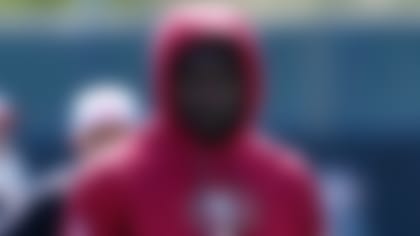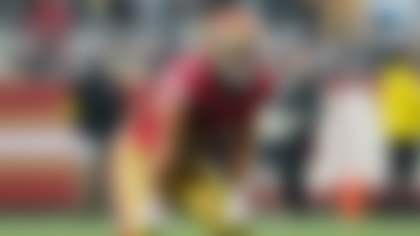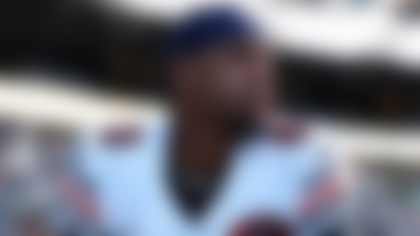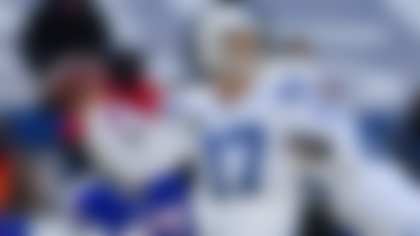The San Francisco 49ers are a title contender behind a stifling defense that has suffocated some of the NFL's top offenses. But they face a tremendous challenge in a New Orleans Saints' offense that has been sizzling since the middle of the season.
After watching Sean Payton's troops hang 40-plus points on another victim in the wild-card round, here are five objectives the 49ers' defense must accomplish to move on to the NFC Championship Game:
1. Disrupt Drew Brees' rhythm in the pocket. There is not a hotter quarterback in this postseason than Brees. He has passed for 300-plus yards in eight straight games, including his 466-yard effort against the Detroit Lions Saturday. Those numbers are complemented by a 28/3 touchdown-to-interception ratio that reveals his incredible effectiveness during that span. Brees is nearly indefensible when given opportunities to throw from a clean pocket. He is incredibly patient, working all areas of the field, and his ability to string together completions is the strength of his game.
The 49ers pass rush needs to generate pressure up the middle to force Brees off his sweet spots and make him throw on the move, or under duress. The Lions were unable to get pressure consistently with their front four, but did have some success attacking off the edges against right tackle Zach Strief. Both of Detroit's sacks were the byproducts of speed rushes from that side, and the 49ers would be wise to build their rush scheme around that premise.
In their preseason game against the Saints, the 49ers were able to harass Brees with four- and five-man pressures that featured overload stunts off the right. Although that contest only pitted the first-teamers for about 20 snaps, the fact that Brees was unable to find a rhythm or lead his unit to any points certainly provides San Francisco's defensive coaches with a potential blueprint for their postseason matchup.
2. Stop the Saints' power running game. The Saints finished the regular season sixth in rushing behind a talented running back rotation -- Pierre Thomas, Mark Ingram (unavailable for the playoffs), Chris Ivory and Darren Sproles -- that poses unique challenges to opponents with its versatility. The backs' collective ability to generate production on the ground allows Payton to seamlessly shift styles when opponents load up against the pass, and enables the Saints to establish an offensive rhythm when they are out of sync.
The biggest challenge in defending this is quickly identifying the personnel in the game and the role each runner plays. Ivory is used extensively in two-back formations and directed between the tackles to soften up the interior defense. His presence on early downs typically signifies a power running play, and prompts defensive coordinators to utilize eight-man boxes. Sproles, who sported a team-leading 6.9 yards-per-carry average during the regular season, is a change-of-pace back. He gets his touches on various misdirection runs and deception plays designed to spring him into the second level. Thomas, the Saints' second-leading rusher, can handle power plays or off-tackle runs from one- or two-back positions.
The 49ers assistant coach assigned to monitor substitution patterns must quickly relay that information to the defensive coordinator, so that he can get the right call into the game. On the field, 49ers' defenders must be alert to who is in the game at running back. The front line must get penetration at the point of attack, and allow linebackers Patrick Willis and NaVorro Bowman to run freely at the ball. The 49ers will use some eight-man fronts against run-heavy teams, but the Saints' potent passing game could force them to use weak-side rolled coverage (backside corner near line of scrimmage covering the flat, with free safety rolled over the top) to get another defender near the box, while protecting against vertical throws to split end Marques Colston.
3. Limit Sproles' impact on the passing game. As much as Sproles affects the game as a runner and returner, it's his ability to produce explosive plays in the passing game that ignites the Saints. Payton calls flats, swing and angle routes to the weak side to take advantage of Sproles' superior speed and quickness against linebackers. The 49ers must craft a plan for limiting his touches in the passing game. That plan will likely feature some form of bracket coverage with Willis and Bowman. The duo possesses the athleticism to stick with the shifty pass catcher in space, and both backers could use their strength to disrupt Sproles with jams near the line of scrimmage.
The Saints will make it difficult to use double teams by lining up Sproles and Jimmy Graham on the same side, but a few combination zones focused on the tandem could neutralize their effectiveness in the passing game.
4. Have a plan for Jimmy Graham. The Saints are one of the best teams at creating mismatches in space, and Graham is the key to the tactic with his unique combination of skills. The former college basketball player is too athletic for linebackers and poses a problem for defensive backs with his size. If the Saints align Graham wide as a quasi-receiver and Brees spots a defensive back or linebacker in man coverage, he can work the back-shoulder fade or slant. If he reads zone coverage based on alignment, Brees will work the middle of the field to exploit the seams in the defense.
The 49ers, however, have versatile safety Donte Whitner, who is fast enough to stay with Graham on vertical routes while possessing the strength to fight for position on post-up routes. If Whitner holds his own one-on-one with Graham, the 49ers can feature their base or nickel package without compromising their ability to defend the run or pass.
5. Take away the deep ball. Most defensive coordinators stress the importance of limiting big plays, but it is imperative for the 49ers to keep balls from flying over their heads against New Orleans. The Saints ranked eighth in the NFL with 11 40-yard-plus pass plays, and their vertical component is part of the reason they have scored 40-plus points in five of their past seven games.
Brees is a masterful ball handler and his ability to sell the run lures defensive backs to the line of scrimmage. Payton complements the run action in the backfield by designing vertical routes for his receivers from tight alignments typically associated with New Orleans' favorite running plays.
The Saints will also take deep shots whenever they approach midfield. Payton understands the difficulty of scoring against red zone defenses, so he is prone to attack with vertical shots before the field condenses. That's why the 49ers must anticipate deep throws when the ball passes midfield, and their corners -- Tarell Brown and Carlos Rogers -- must adjust their alignments to keep the ball from flying over their heads. The 49ers allowed 12 passing plays of 40-plus yards during the regular season, fifth-most in the NFL, so they should expect the Saints to take their shots. How well they defend against those deep throws could determine whether they move on to the next round.
Follow Bucky Brooks on Twitter @BuckyBrooks.




